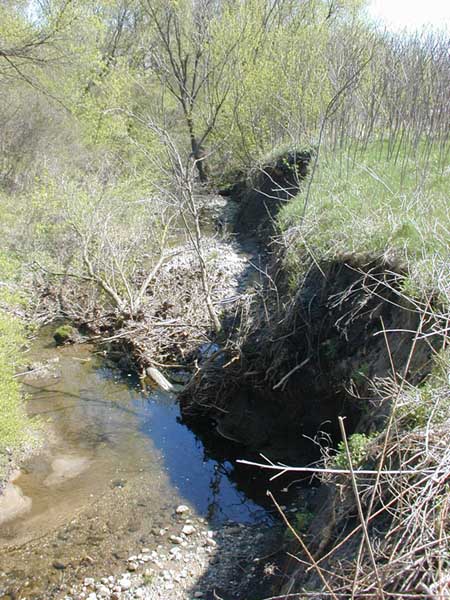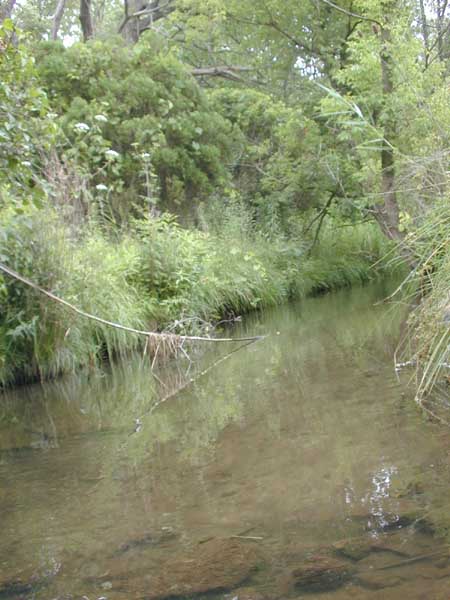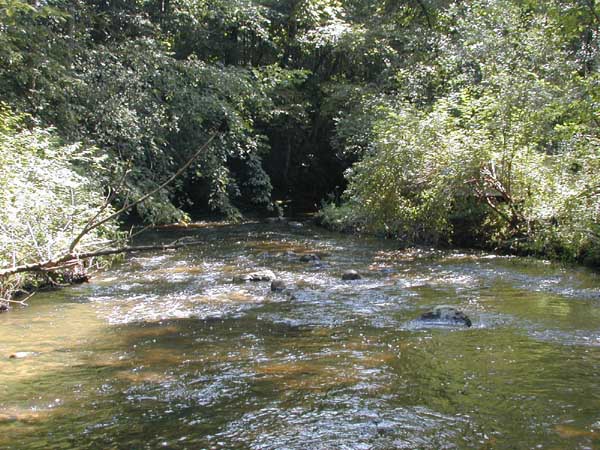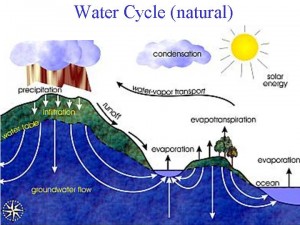
The Impact of Development on Fresh Water Resources
In an undeveloped watershed, most precipitation (rain and snow) either infiltrates into the ground or is taken up by vegetation. Much of the water that infiltrates into the ground eventually finds its way into streams or lakes through groundwater seeps or springs. Water that is taken up by vegetation cycles back into the atmosphere through evaporation, a process also known as evapotranspiration.
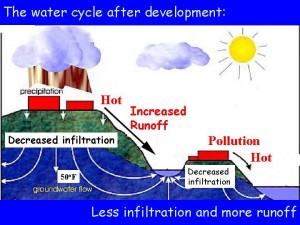
As a result of these processes, runoff in undeveloped or natural areas is negligible, with the exception of the brief period after a severe storm. Ecologically intact systems thus benefit communities in many ways – groundwater recharge, pollutant removal, temperature reduction, erosion control, air purification, flood and drought management, wildlife habitat, human recreation, and increased property values.
Within a watershed, increasing development brings an increase in impervious surfaces. Water runs directly off the hard surfaces (such as parking lots and paved roads) into rivers, lakes, and streams, causing serious problems for these fresh water resources and their inhabitants.
In highly impervious watersheds,
- streams are flooded with runoff after rainfall or snowmelt, but deprived of water during dry periods;
- high flows damage aquatic habitats and scour the stream banks;
- low flows deprive aquatic wildlife of water and oxygen;
- runoff water is warmer than infiltrated groundwater;
- runoff water carries soil and other substances picked up along the way, such as fertilizer, pesticides, oils, and other pollutants;
- and the entire system loses its capacity to provide important ecological benefits, such as groundwater recharge, pollutant removal, temperature reduction, and erosion control.
The pollution found in unfiltered runoff is called nonpoint source pollution. It does not come from one specific source, such as a factory. Rather, it is the result of our everyday activity in and around our homes and businesses, and on our roads and farms. (For more information on nonpoint source pollution, please go to our web page Nonpoint Source Pollution.)
Examples of creeks in the Huron River Watershed:
